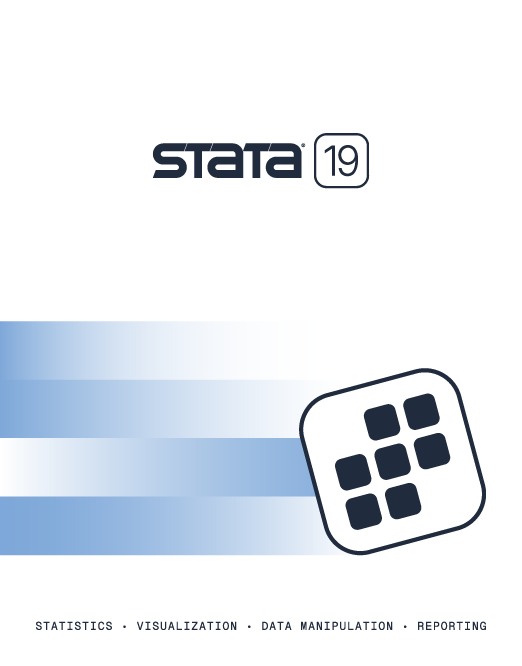

Stata 19 is here—explore all the features.
Machine learning via H2O
Stata's integration of H2O machine learning provides a powerful, scalable, and
user-friendly framework for applying modern machine learning techniques.
Interact with an H2O cluster seamlessly within Stata to train and evaluate
predictive models efficiently. Obtain predictions and use Shapley additive
values, partial dependence plots, and more to explain those predictions.
You can use the h2oml commands with familiar Stata syntax or let the
point-and-click Control Panel interface guide you through your end-to-end
data-analysis process. See more features
here.
Lasso
With Stata's lasso and elastic-net features, you can perform model selection
and prediction for your continuous, binary, and count outcomes. Want to
estimate effects and test coefficients? With lasso inferential methods,
you can make inferences for variables of interest while lassos select control
variables for you. You can even account for endogenous covariates.
See more features here.
Bayesian variable selection
The bayesselect command provides a flexible Bayesian approach to
variable selection by using specially designed priors for
coefficients, such as global–local shrinkage and spike-and-slab priors.
It accounts for model uncertainty when estimating model parameters and
allows you to perform Bayesian inference for regression coefficients.
bayesselect is fully integrated into Stata's Bayesian suite and works
seamlessly with all Bayesian postestimation routines, such as those for
Bayesian predictions and diagnostics.
Bayesian model averaging
Perform Bayesian model averaging (BMA) with the bma suite to account
for model uncertainty in your analysis. Perform model choice, inference,
and prediction. With BMA, you can identify influential models and important
predictors. You can explore model complexity, model fit, and predictive
performance. And you can perform sensitivity analysis to the assumptions
about importance of models and predictors. See more features
here.
Unsupervised learning
Discover unobserved groups in your data. You can use kmeans, kmedians,
and hierarchical cluster analysis.
And perform principal component analysis. See more features
here.
Community-contributed commands
The Stata community has developed several machine learning commands that
are easily downloadable. You can type search with keywords of interest
to locate commands for support vector machines, neural networks, text mining,
network analysis, and more.
See New in Stata 19 to learn about what was added in Stata 19.
Learn
Free webinars
NetCourses
Classroom and web training
Organizational training
Video tutorials
Third-party courses
Web resources
Teaching with Stata
© Copyright 1996–2025 StataCorp LLC. All rights reserved.
×
We use cookies to ensure that we give you the best experience on our website—to enhance site navigation, to analyze usage, and to assist in our marketing efforts. By continuing to use our site, you consent to the storing of cookies on your device and agree to delivery of content, including web fonts and JavaScript, from third party web services.
Cookie Settings
Last updated: 16 November 2022
StataCorp LLC (StataCorp) strives to provide our users with exceptional products and services. To do so, we must collect personal information from you. This information is necessary to conduct business with our existing and potential customers. We collect and use this information only where we may legally do so. This policy explains what personal information we collect, how we use it, and what rights you have to that information.
These cookies are essential for our website to function and do not store any personally identifiable information. These cookies cannot be disabled.
This website uses cookies to provide you with a better user experience. A cookie is a small piece of data our website stores on a site visitor's hard drive and accesses each time you visit so we can improve your access to our site, better understand how you use our site, and serve you content that may be of interest to you. For instance, we store a cookie when you log in to our shopping cart so that we can maintain your shopping cart should you not complete checkout. These cookies do not directly store your personal information, but they do support the ability to uniquely identify your internet browser and device.
Please note: Clearing your browser cookies at any time will undo preferences saved here. The option selected here will apply only to the device you are currently using.